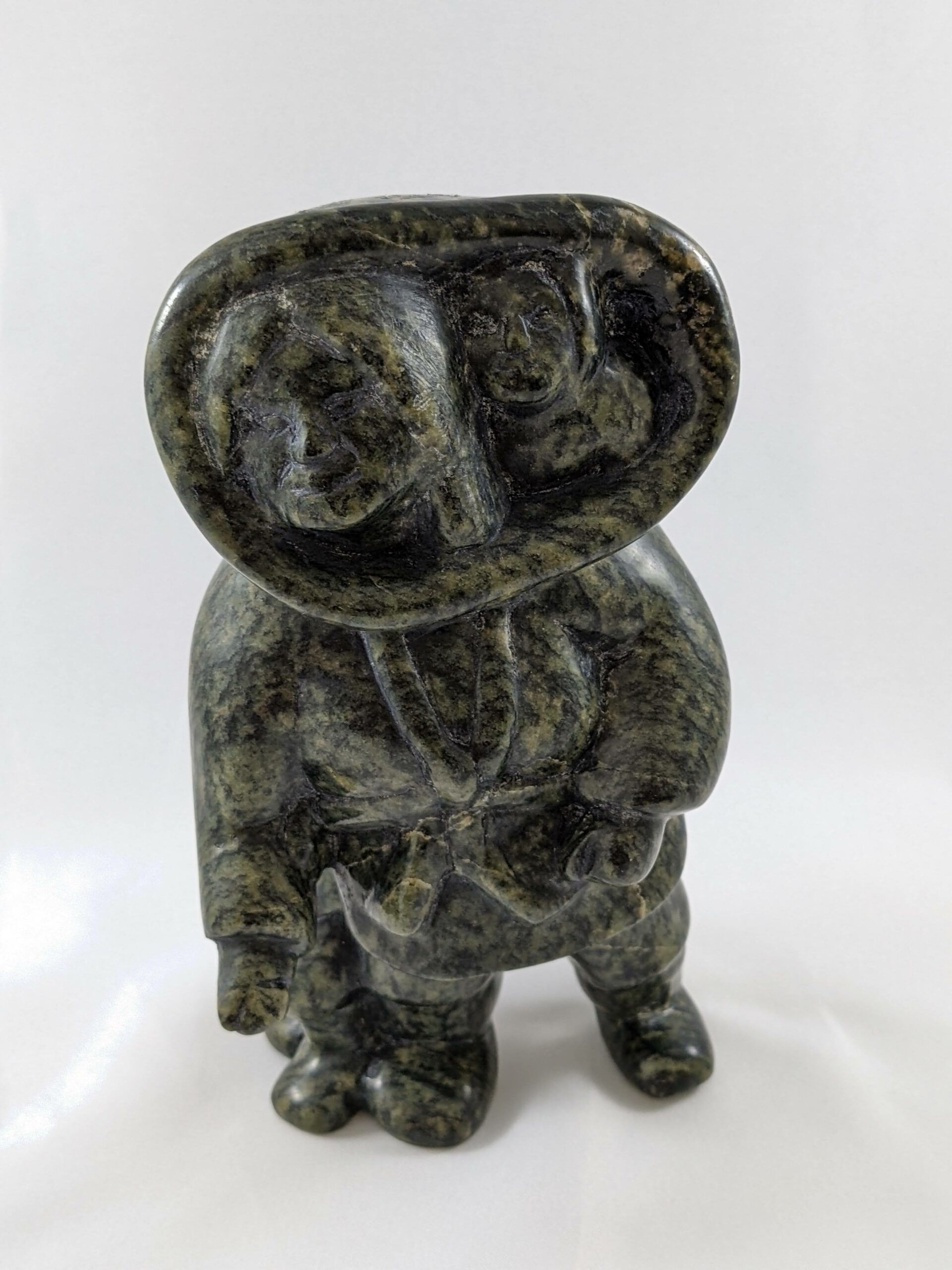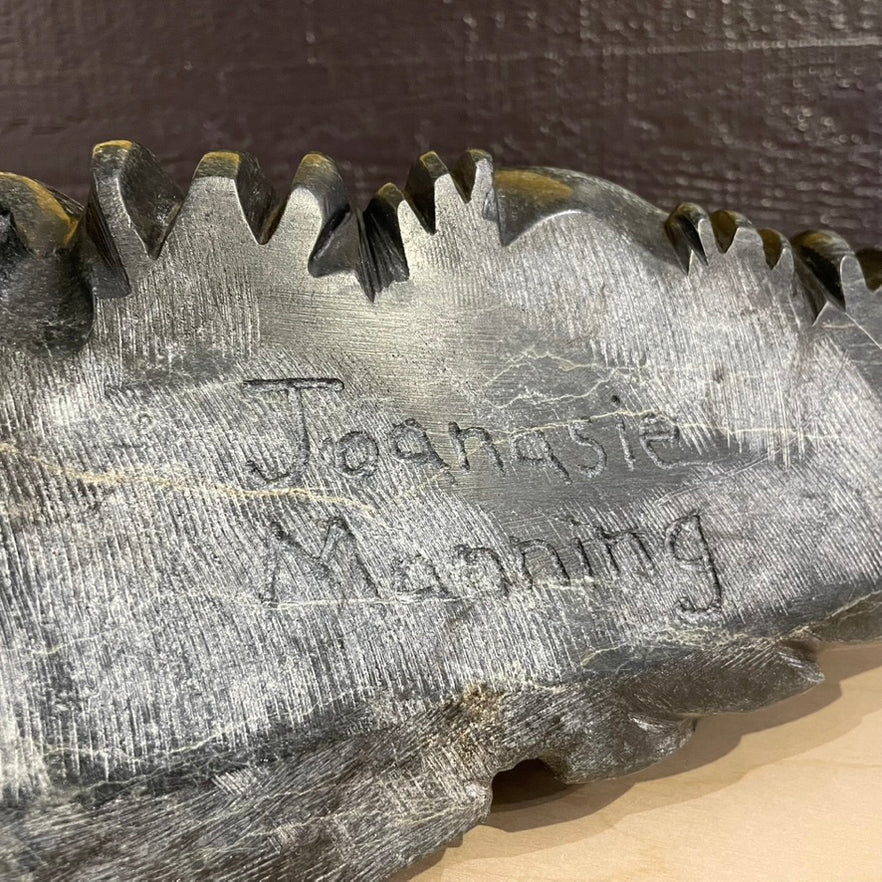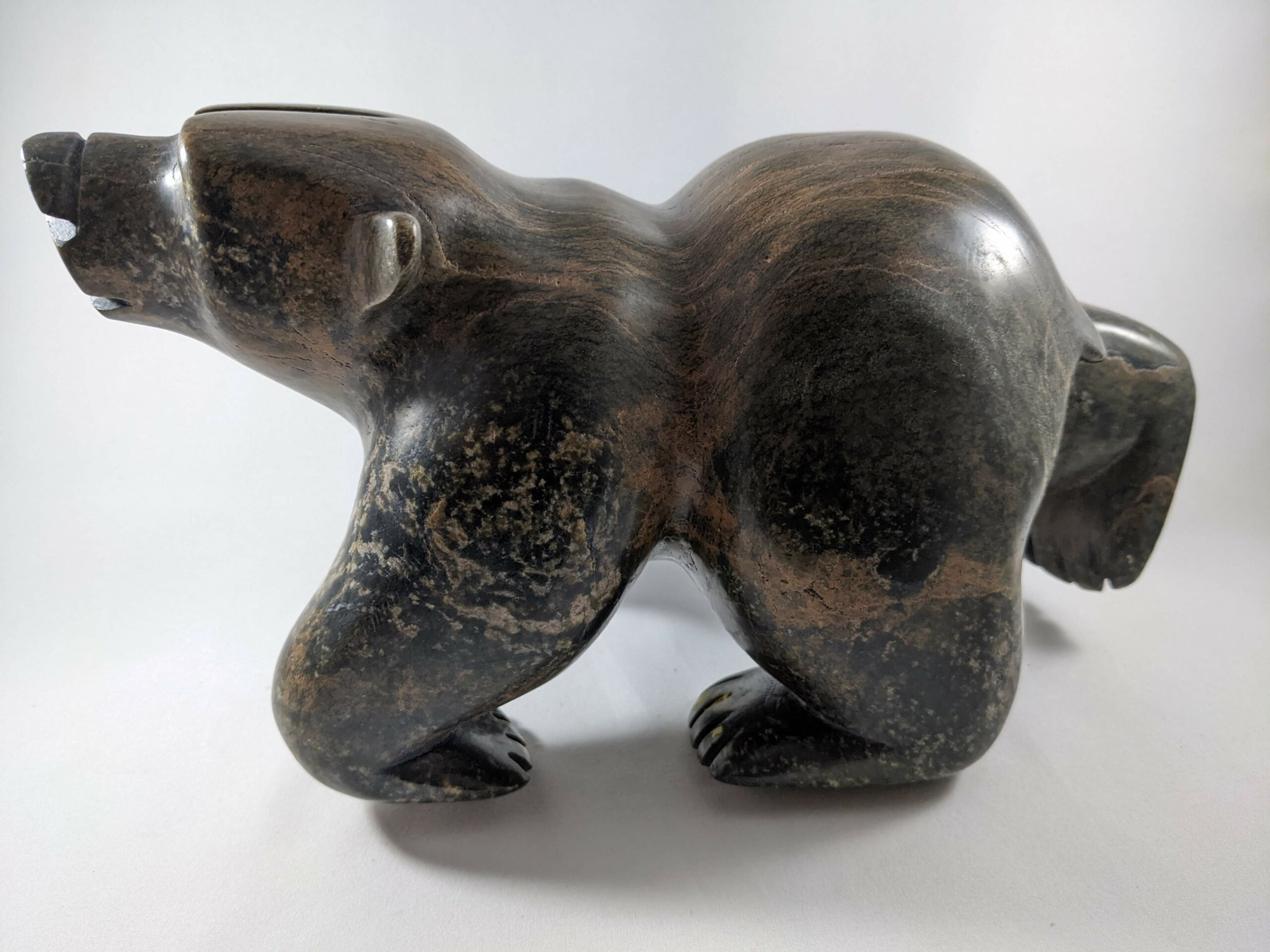
Carving the Arctic Soul: Materials for Traditional Inuit Art and Tools
In the vast, unforgiving expanse of the Arctic, where life is a testament to resilience, the very landscape has provided the raw materials that underpin the survival, culture, and artistic expression of its Indigenous peoples. For millennia, the Inuit and other Arctic communities have transformed bone, ivory, stone, antler, and salvaged wood into an astonishing array of tools, weapons, and sacred objects. These materials, seemingly inert, hold within them the stories of hunting, migration, spirituality, and an unbreakable connection to the land and sea. This article delves into the primary carving materials utilized in traditional Arctic art and tools, exploring their properties, cultural significance, and the ingenuity required to master them.
The Arctic Palette: A Tapestry of Natural Resources
The Arctic environment, characterized by permafrost, ice, and a scarcity of trees, forced its inhabitants to become masters of adaptation. Every available resource was meticulously utilized, and the materials chosen for carving reflect not only their physical properties but also their symbolic weight and the arduous processes of their acquisition. From the durable density of walrus ivory to the pliable warmth of soapstone, each material presented unique challenges and opportunities for the carver.
Stone: The Enduring Spirit of the Earth
Perhaps the most iconic material associated with Inuit art today is stone, particularly steatite, commonly known as soapstone. This metamorphic rock, found in various hues from pale green and grey to deep black and brown, is celebrated for its relative softness and ease of carving. Unlike harder igneous or sedimentary rocks, soapstone allows for intricate detail and a smooth, tactile finish, making it ideal for the expressive sculptures that gained international acclaim in the mid-20th century.

Historically, soapstone’s utility extended far beyond art. Its ability to absorb and retain heat made it indispensable for qulliq (oil lamps) – the primary source of light and warmth in igloos and sod houses – as well as cooking pots and storage vessels. "The stone speaks to you," an elder might say, "it tells you what it wants to become." This intimate relationship between carver and material meant understanding the stone’s grain, its hidden fissures, and its inherent character. Other stones like argillite and serpentine were also used, offering different textures and hardness, demanding greater patience and more robust tools. The challenge lay not just in carving but in the arduous process of quarrying and transporting these heavy materials, often from remote deposits, across challenging terrain.
Ivory: The Whispers of the Ocean
Among the most prized and prestigious carving materials in the Arctic is ivory, primarily sourced from walrus tusks, but also from narwhal tusks and, less commonly, polar bear canines. Walrus ivory, dense, fine-grained, and capable of taking an exquisite polish, has been central to Inuit material culture for thousands of years. Its strength and resistance to wear made it ideal for essential tools and implements: harpoon heads, spear points, toggles, needle cases, and fishing lures.
The acquisition of ivory was intrinsically linked to the hunt, embedding it with the spirit of the animal and the prowess of the hunter. Walrus tusks, which can grow up to three feet long, provided substantial material, while the narwhal’s unique, spiraled tusk – the mythical "unicorn horn of the Arctic" – was particularly valuable for its rarity and beauty, often reserved for ceremonial objects or as a symbol of status.
Inuit carvers developed extraordinary skill in working ivory, often decorating surfaces with intricate scrimshaw-like etchings depicting hunting scenes, mythological figures, or geometric patterns. These miniature masterpieces, sometimes no larger than a thumb, showcase an astonishing level of detail and artistic sophistication, reflecting a profound connection to the animal world and a deep understanding of their environment. The ivory also lent itself to the creation of small, portable carvings, often depicting animals or human figures, which might serve as amulets, teaching tools, or simply objects of beauty.
Bone: The Foundation of Life
Bone, an ever-present reminder of the successful hunt, was perhaps the most abundant and versatile carving material available. From the massive vertebrae and ribs of whales to the smaller, denser bones of caribou, seals, and polar bears, every fragment found a purpose. Whalebone, with its unique texture and impressive size, allowed for the creation of larger, more monumental sculptures, as well as structural components for shelters or sleds. Its fibrous nature and varied hues, from bleached white to rich brown, also offered distinctive aesthetic qualities.
Caribou bone, being ubiquitous across the Arctic landmass, was a fundamental resource. It was fashioned into a vast array of tools: awls for piercing hides, needles for sewing, handles for knives, snow knives, and various components for hunting equipment. Seal bone, denser and smaller, served similar purposes for finer work. The careful selection and preparation of bone, often involving drying, boiling, or soaking, were crucial steps to prevent cracking and ensure durability. The act of carving bone was a testament to the Inuit philosophy of respecting and utilizing every part of a hunted animal, ensuring that its spirit continued to serve the community.
Antler: The Crown of the Caribou

Caribou antler, shed annually by the animals, offered another valuable carving medium. Lighter and somewhat more porous than bone, antler was nonetheless remarkably strong and flexible when fresh, making it ideal for specific applications. It was commonly used for tool handles, toggles, arrowheads, and fishing lures. Its natural curvature and branching forms could also inspire unique artistic creations, often depicting animals or human figures that integrated the antler’s organic shape.
The process of working antler involved careful shaping, sometimes through soaking to soften it, and then intricate scraping and polishing. Antler’s distinctive texture and warmth made it a favored material for items that required a comfortable grip or a lightweight yet durable component. Like bone, its availability was directly linked to the caribou herds, reinforcing the deep interdependence between the Inuit and their primary sustenance animal.
Wood: The Gift from Afar
In a land famously devoid of trees, wood was a precious and rare commodity. Any wood found in the Arctic was almost exclusively driftwood, carried by ocean currents from distant forests in Siberia or North America. This "liquid gold" of the Arctic was meticulously collected, carefully stored, and reserved for its most critical uses.
Driftwood’s properties varied depending on its origin and how long it had been exposed to the elements. It was primarily used for structural components where strength and lightness were paramount: sled runners, kayak frames, tent poles, and tool handles. Because of its scarcity, wood was rarely used for purely artistic carving in the same way as stone or ivory, though smaller pieces might be incorporated into composite tools or occasionally fashioned into masks or ceremonial objects. The discovery of a substantial piece of driftwood was a cause for celebration, a tangible link to a world beyond the ice, and a testament to the ocean’s generous, if unpredictable, bounty.
Tools and Techniques: The Carvers’ Ingenuity
The transformation of these raw materials into functional objects and evocative art was, and remains, a meticulous process demanding profound skill, patience, and ingenuity. Traditionally, carvers relied on a suite of self-made tools: stone adzes for roughing out shapes, bone or antler chisels for finer work, flint or slate knives for cutting, and sand or water as abrasives for polishing. Sinew from caribou or seals was used for bindings and lashings, while animal fats provided lubrication and a lustrous finish.
With the arrival of European traders and explorers, new tools became available. Steel knives, files, and later, power tools, revolutionized the carving process, allowing for greater speed and precision. However, many traditional techniques and the spirit of working directly with the material persist. Modern Inuit carvers often combine traditional knowledge with contemporary tools, blending the ancient and the new to continue a living artistic tradition.
Spiritual and Cultural Significance
Beyond their practical utility, these materials held profound spiritual and cultural significance. For the Inuit, the land and its creatures are imbued with spirits, and the act of carving is often a dialogue with these spirits. The materials themselves carry the essence of their origin – the strength of the whale, the resilience of the caribou, the enduring presence of the earth. Carvings were not merely objects; they were often seen as embodiments of inua (spirit or essence), conduits for communication with the spiritual world, or representations of myths and legends.
The creation of an object from these materials was an act of reverence, a celebration of the interconnectedness of all life. It reinforced the Inuit worldview, where humanity is not separate from nature but an integral part of its delicate balance.
The Legacy Endures
Today, the landscape of Arctic carving is evolving. While traditional knowledge and techniques are carefully preserved and passed down through generations, contemporary Inuit art also embraces new forms, themes, and interpretations. Regulations surrounding the trade of ivory have introduced complexities, prompting carvers to innovate with alternative materials or focus on ethically sourced and certified pieces.
Yet, the core principles remain. The materials chosen by Arctic carvers are more than mere substances; they are chapters in an ongoing story of survival, artistry, and cultural identity. They speak of a people who, faced with the harshest conditions on Earth, found beauty, utility, and spiritual meaning in every stone, bone, and tusk. The traditional carving materials of the Arctic are not just raw resources; they are the very sinews of a culture, continually shaped and redefined, echoing the enduring spirit of the North.